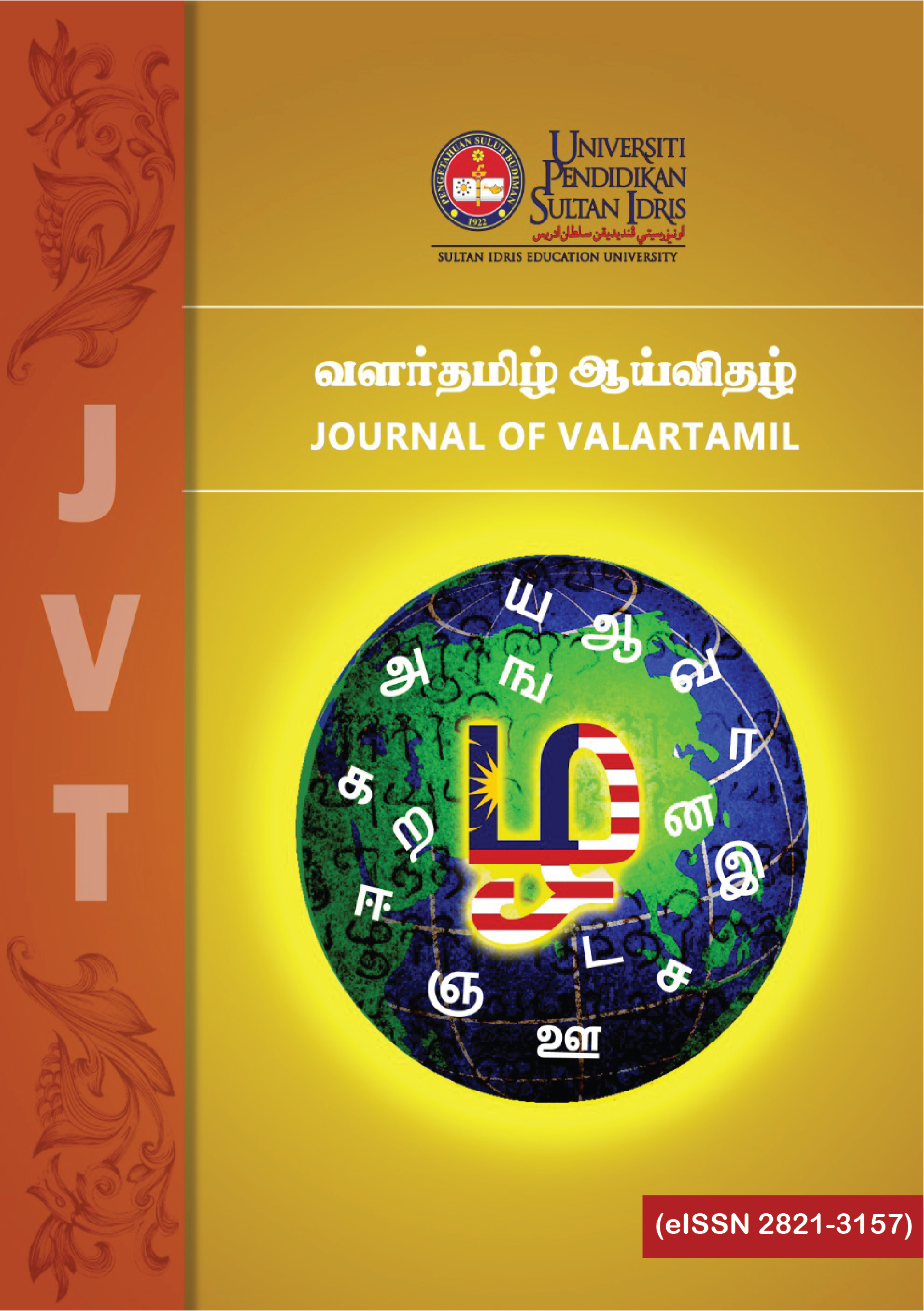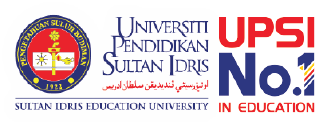திருக்குறளைப் பரவலாக்கம் செய்வதில் மலேசிய ஊடகங்களின் பங்கு
Role of Malaysian Mass Media in promoting Thirukkural
DOI:
https://doi.org/10.37134/jvt.vol1.2.5.2020Keywords:
ஊடகம், தகவல் ஊடகக் கோட்பாடு, தமிழ் நாளிதழ்கள், புலம்பெயர் தமிழர், தமிழ் இலக்கியம், திருக்குறள்Abstract
மலேசியாவில் சிறுபான்மையினராய் வாழும் தமிழர்கள், தங்கள் அடையாளம், மொழி, இலக்கியம், பண்பாடு முதலியவற்றைத் தக்க வைத்துக்கொள்வதில் பல சவால்களை எதிர்நோக்குகின்றனர். பல்வேறு மொழிகளையும் பல்வகை பண்பாடுகளையும் கொண்ட மலேசியாவில் தமிழ்மொழி வளர்ச்சிக்கும் தமிழ் இலக்கிய வளர்ச்சிக்கும் அச்சு ஊடகங்கள், மின்னியல் ஊடகங்கள் எனும் இரு வகை தகவல் தொடர்பு ஊடகங்களும் பெரும் பங்காற்றியுள்ளன. உலகின் எல்லா முதன்மையான மொழிகளின் மொழிபெயர்ப்புகளையும் அதிகமான தெளிவுரைகளையும் கொண்ட முக்கியத்துவம் பெற்ற, ஒரே தமிழ் இலக்கியம், திருக்குறள் தான் (Bharathi, Sridevi, & Varshitha, , 2017). ஈராயிரம் ஆண்டுகளுக்கு முன்பு எழுதப்பட்டிருந்தாலும், இன்றைய வாழ்வியல் சூழலுக்கும் மானிட வாழ்க்கைக்கும் பொருந்துகின்ற கொள்கைகளைப் பெற்றுள்ளதால், திருக்குறள் ஒரு வாழ்வியல் நூலாகப் போற்றப்படுகின்றது (Madhusudanan & Nalini, 2015). பொதுவாக, மலேசியா போன்ற புலம்பெயர் நாடுகளில் வாழும் தமிழர்கள், உள்ளூர் மக்களுக்குத் திருக்குறளை அறிமுகப்படுத்த பல்வேறு வழிகளைக் கடைப்பிடிக்கின்றனர். தகவல் தொடர்பு ஊடகங்கள், குறிப்பாக நாளிதழ்கள், வானொலி, தொலைக்காட்சி என்பன திருக்குறளைப் பரவலாக்கம் செய்யும் முதன்மை ஊடகங்கள் ஆகும். எனவே, இக்கட்டுரை திருக்குறளைப் பரவலாக்கம் செய்வதில் மலேசிய அச்சு ஊடகங்களும் மின்னூடகங்களும் ஆற்றும் பங்கினை ஆராய்ந்துள்ளது. திருக்குறள் தொடர்பான பனுவல்களையும், நிகழ்ச்சிகளையும் அடையாளங்காண்பதும் அவற்றுள் குறள்கள் எப்படிப் படைக்கப்பட்டுள்ளன என்பதை விவரிப்பதும் இக்கட்டுரையின் நோக்கங்களாகும். உற்றுநோக்குதலும் ஒலிஒளிப் பதிவுகளும் இந்தத் தரவியல் ஆய்வின் கருவிகளாகும். இந்த ஆய்வின் தரவுகள் நான்கு உள்நாட்டு நாளிதழ்களிலிருந்தும், மலேசியத் தமிழ் வானொலியான மின்னல் பண்பலையிலிருந்தும், தமிழ் நிகழ்ச்சிகளை ஒளியேற்றும் மலேசியத் தொலைக்காட்சி அலைவரிசையான tv2 இலிருந்தும் பெறப்பட்டன. சேகரிக்கப்பட்ட தரவுகள் McQuail (2010) அறிமுகப்படுத்திய தகவல் ஊடக கோட்பாட்டின் (Mass Communication Theory) அடிப்படையில் பகுப்பாய்வு செய்யப்பட்டன. திருக்குறளைப் பரவலாக்கம் செய்வதில், குறிப்பாக இளையத் தலைமுறையினருக்குப் பரவலாக்கம் செய்வதில் தகவல் ஊடகங்களின் விளைப்பயனையும் முக்கியத்துவத்தையும் இக்கட்டுரை விவாதித்துள்ளது. மேலும் ஊடகப் பயனர்களை ஈர்க்கும் சுவாரசியமான, விளைப்பயன் மிக்க அனுகுமுறைகளையும் திருக்குறளின் அறநெறிகளை மறைமுகமாக விதைக்கும் வழிமுறைகளையும் இக்கட்டுரை பரிந்துரைத்துள்ளது.Abstract
Malaysian Tamils originated from South India, being a minority group faces a lot of challenges in preserving and maintaining their identity, culture, language and literature. Both printed and electronic mass media had played an important role in maintaining Tamil language and literature in Malaysia, a multilingual and multi-cultural nation. Thirukkural is an ancient scripture in Tamil literature, was written by Thiruvalluvar is the only Tamil literary work which has gained so much importance and has seen many translations and commentaries into almost all major languages of the world (Bharathi, Sridevi, & Varshitha, , 2017). Thirukkural also is beacon and guide to life, though written millenniums ago its principles are still relevant in present day contexts and stand as an embodiment of human life (Madhusudanan & Nalini, 2015). Therefore, it is imperative that Thirukkkural need to be reinforced into the society especially among the diaspora community. Generally, diaspora countries such as Malaysia practice various ways to introduce Thirukkural use to local communities. Mass media especially newspapers, radio and television are the main mediums for channelling Thirukkural to audiences. Therefore, this paper aims to study the role of Tamil channels of Malaysian printed and electronic medias in promoting Thirukkural. Identifying Thirukkural related articles and programs and explaining the purpose of these publications and broadcastings are the objectives of this study. Observation and recording are the instruments used in this qualitative study. Data for this study was quoted from 4 local Tamil newspapers for two weeks. Collected data were analysed based on Mass Communication Theory that was popularized by McQuail (2010). This study discusses the effectiveness and importance of media in promoting Thirukkural especially to the younger generation. This study also helps to identify some interesting and effective methods to attract audience and indirectly cultivate the ethics from Thirukkural.
Keywords: Electronic Media, Mass Communication Theory, Tamil Dailies, Tamil Diaspora, Tamil literature, Thirukkural
Downloads
References
Madhusudanan, S., & Nalini, R. (2015). Life Skills in Classical Tamil Literature, Thirukural. ZENITH International Journal of Multidisciplinary Research, 5(8), 90-95.
McQuail, D. (2010a). Mass Communication Theory Media and Communication Research Methods 2nd Ed. Sage publications.
McQuail, D. (2010b). McQuail's Mass Communication Theory. Sage publications.
Subramaniam, S. (2010). Ethical Leadership Views from Tamil Classical Literature-With Reference to Thirukural. Available at SSRN 1605320.
Ramakrishnan, (2013). Tamil Ilakkiam. Retrieved from http://tamil.thehindu.com.





